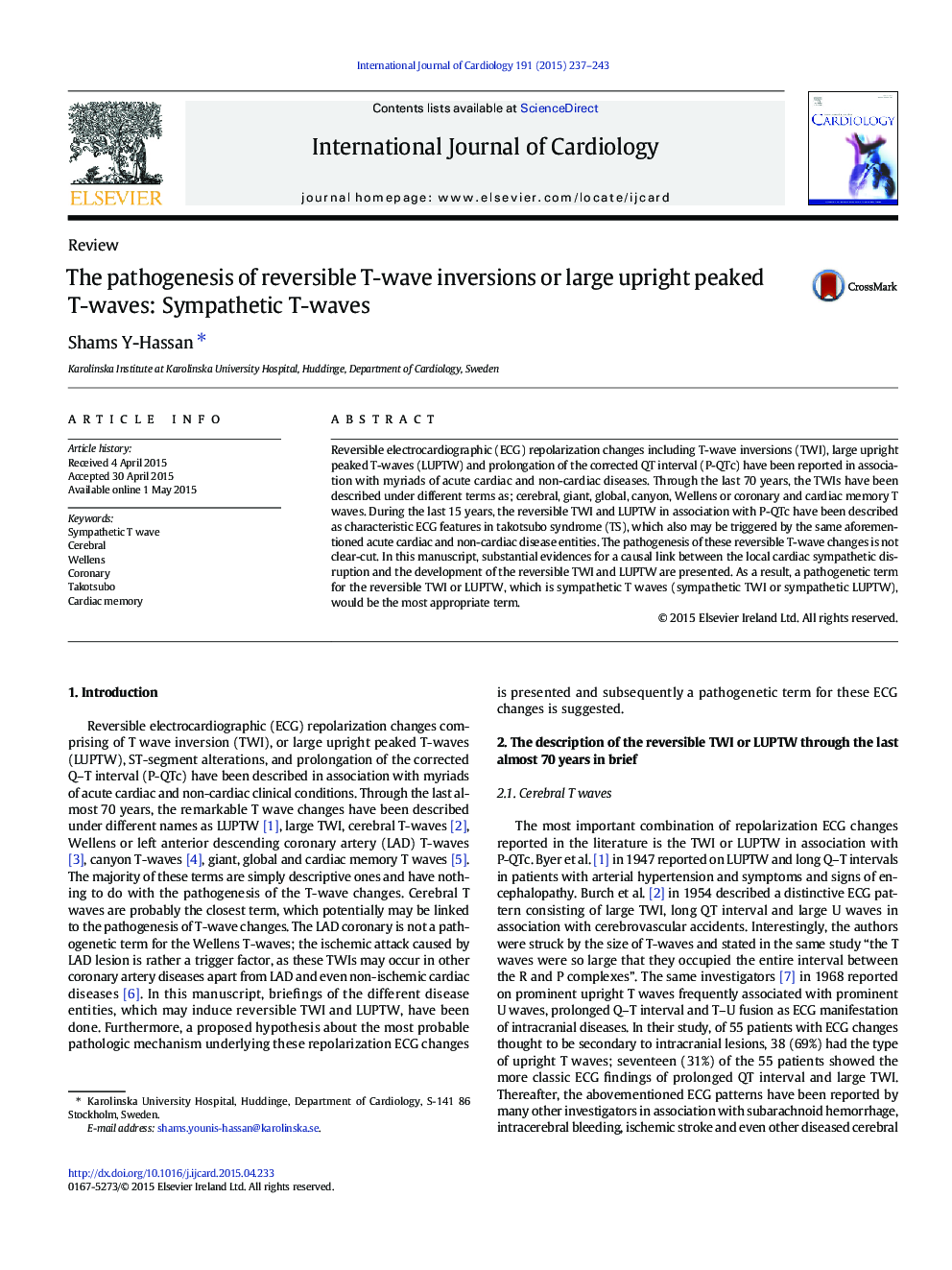| Article ID | Journal | Published Year | Pages | File Type |
|---|---|---|---|---|
| 5966807 | International Journal of Cardiology | 2015 | 7 Pages |
â¢Reversible T-wave inversions (TWI) and large upright peaked T-waves (LUPTW) are reviewed.â¢TWIs and LUPTWs before and during the takotsubo syndrome (TS) era are discussed.â¢The pathogenesis of both TS and reversible TWIs and LUPTWs is reviewed.â¢A proposed pathogenetic term “sympathetic TWIs or LUPTWs” is presented.
Reversible electrocardiographic (ECG) repolarization changes including T-wave inversions (TWI), large upright peaked T-waves (LUPTW) and prolongation of the corrected QT interval (P-QTc) have been reported in association with myriads of acute cardiac and non-cardiac diseases. Through the last 70Â years, the TWIs have been described under different terms as; cerebral, giant, global, canyon, Wellens or coronary and cardiac memory T waves. During the last 15Â years, the reversible TWI and LUPTW in association with P-QTc have been described as characteristic ECG features in takotsubo syndrome (TS), which also may be triggered by the same aforementioned acute cardiac and non-cardiac disease entities. The pathogenesis of these reversible T-wave changes is not clear-cut. In this manuscript, substantial evidences for a causal link between the local cardiac sympathetic disruption and the development of the reversible TWI and LUPTW are presented. As a result, a pathogenetic term for the reversible TWI or LUPTW, which is sympathetic T waves (sympathetic TWI or sympathetic LUPTW), would be the most appropriate term.
